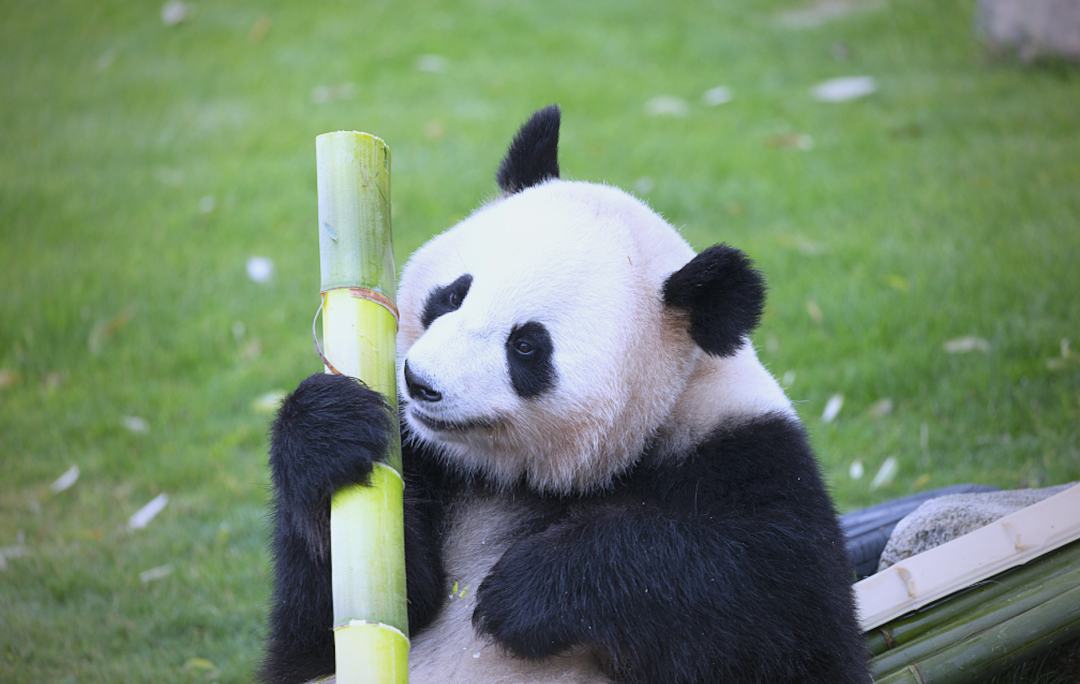
Located in Chenghua District, Chengdu City, Sichuan Province, the Chengdu Research Base of Giant Panda Breeding is one of the main research bases for China's ex-situ conservation project for giant pandas and other endangered wildlife. It is a national AAAA-level tourist attraction and a world-renowned base for giant panda scientific research, breeding, conservation education, and eco-tourism.
Founded in 1987 with just 6 sick and hungry giant pandas, the base has grown over more than three decades into a large facility covering 1,500 acres, with complete giant panda breeding and research facilities, a comprehensive management system, and a professional research team. As of the end of 2023, the base has bred over 230 giant pandas, with 163 surviving individuals, making it the world's largest artificial breeding population of giant pandas in captivity.
The base focuses on the protection and breeding of giant pandas while conducting related scientific research, public education, and eco-tourism. The base simulates the wild habitat of giant pandas and has multiple giant panda exhibition areas, research centers, science education centers, and panda museums, providing suitable living environments for giant pandas and good visiting and research conditions for tourists and researchers.
As an important window for China's giant panda conservation efforts, the Chengdu Research Base of Giant Panda Breeding has not only achieved many world-leading results in giant panda breeding technology but has also made important contributions to global endangered species conservation through international cooperation, scientific research, and public education activities, becoming an important platform for "panda diplomacy" connecting China with the world.
The Chengdu Research Base of Giant Panda Breeding adopts a natural layout, simulating the wild habitat of giant pandas, and organically combines scientific research, conservation, education, and tourism functions. The park is densely covered with bamboo forests and streams, providing a near-natural living environment for giant pandas and a comfortable visiting experience for tourists.
Composed of multiple independent giant panda enclosures, each villa has indoor activity areas and outdoor playgrounds, equipped with climbing facilities and rest areas, providing a comfortable living environment for adult giant pandas.

A special area designed for expectant mother pandas and newborn cubs, equipped with constant temperature and humidity incubators and professional care equipment. Visitors can watch the growth process of panda cubs through observation windows.

A collective living area designed for 1-2 year old juvenile giant pandas. These pandas are lively and active, often playing and frolicking together, making it one of the most popular exhibition areas in the base.

A modern exhibition hall integrating scientific research display and science education, introducing visitors to the biological characteristics and conservation achievements of giant pandas through multimedia interactions and specimen displays.
The Chengdu Research Base of Giant Panda Breeding has achieved many world-leading scientific research results in the field of artificial giant panda breeding, overcoming the "three difficulties" of giant panda estrus, breeding, and cub rearing, and establishing a mature technical system for artificial giant panda breeding.
To achieve the natural recovery of giant panda populations, the base has carried out giant panda wild training and release research projects, establishing two wild training bases in Wolong Tiantai Mountain and Ya'an Bifengxia, successfully releasing multiple artificially bred giant pandas into the wild.
In 2016, "Huajiao," a giant panda bred by the base, was successfully released into the wild and has survived to this day, marking an important breakthrough in China's giant panda wild release technology. As of 2023, 11 giant pandas have been successfully released into the wild from the base, making important contributions to the recovery of wild giant panda populations.
The base actively conducts international cooperation and exchanges, establishing cooperative relationships with zoos and research institutions in many countries, and promoting the development of global giant panda conservation through international giant panda cooperation research projects.
The base has conducted giant panda cooperative research with the United States, Canada, Japan, France, Germany, and other countries, not only spreading China's giant panda conservation technology and experience but also enhancing the international community's understanding and support for China's wildlife conservation cause, becoming an important platform for "panda diplomacy" connecting China with the world.
| Daily Opening Hours | 7:30-18:00 (April-October) |
| 8:00-17:30 (November-March) | |
| Last Admission | 17:00 (April-October) |
| 16:30 (November-March) |
| Adult Ticket | ¥55/person |
| Half-price Ticket (Students/Seniors) | ¥27/person |
| Sightseeing Bus (One-way) | ¥10/person |
| Sightseeing Bus (Round-trip) | ¥20/person |
* Free Admission Policy: Children under 6 years old (inclusive) or under 1.3 meters tall (inclusive), active military personnel and disabled persons with valid documents can enter free of charge
No. 1375, Panda Avenue, Chenghua District, Chengdu, Sichuan Province
1987
1,500 acres
163 (as of the end of 2023)
National AAAA Tourist Attraction
Chengdu Zoo, Zhaojue Temple, Beihu Park
Spring and Autumn (March-May, September-November)
Approximately 6 million
Giant pandas are rare mammals endemic to China, classified as a first-class national protected animal, known as "China's national treasure" and "living fossils"
Although belonging to the order Carnivora, 99% of a giant panda's diet consists of bamboo. They need to eat 12-38 kilograms of bamboo daily, with feeding time lasting up to 14 hours
The lifespan of wild giant pandas is approximately 15-20 years, while captive giant pandas can live up to 30 years or more, with the highest recorded age being 38
Female giant pandas go into estrus once a year, with the estrus period lasting only 2-3 days. The gestation period is 83-200 days, and they give birth to 1-2 cubs per litter, with newborn cubs weighing only about 100 grams
After years of conservation efforts, giant pandas have been downgraded from "Endangered" to "Vulnerable," with wild populations recovering to 1,864 individuals (as of 2021)